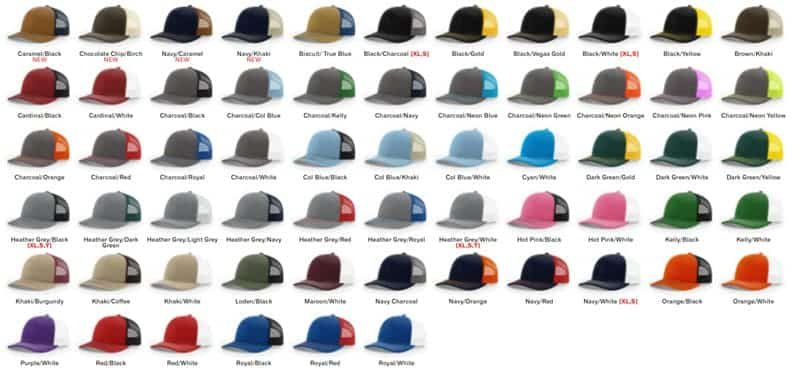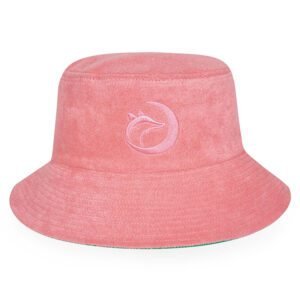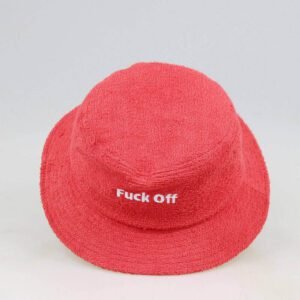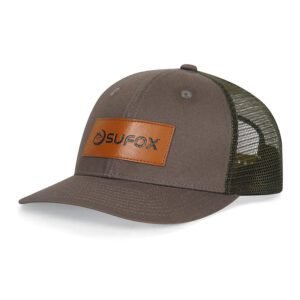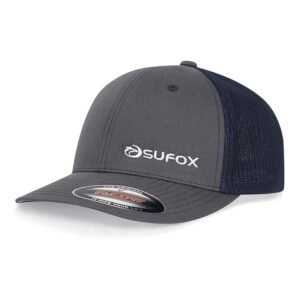Golf caps take a beating—between long hours in the sun, sweat, sunscreen, and the occasional rain shower, they quickly collect stains and odors that are tough to ignore. The challenge? Cleaning them without ruining the brim, fading the fabric, or distorting the shape. That’s why “how to clean golf caps” is such a popular search among players who want their hats looking sharp on and off the course. In diesem Artikel, we’ll walk through safe, proven methods for every material—cotton, polyester, wool blends—and cover how to tackle sweat rings, deodorize, and preserve your cap’s fit so it lasts season after season.

What to Consider Before Cleaning a Golf Cap
Before you dive into any “how to clean golf caps” routine, confirm what the cap is made of und what’s inside the brim. Most failures (warped bills, color bleed, fuzzy embroidery) happen when material/structure is misidentified. The quick goal: remove sweat stains and odor without ruining the brim or shape.
Common Fabrics & Their Care Profiles
Cotton / Twill / Canvas
- Traits: Breathable, absorbent, prone to shrinking and losing shape when over-soaked or hot-dried.
- Cleaning sweet spot: Hand wash in cold water with a mild, enzyme laundry detergent; short soak only. Blot, don’t wring.
- Risks: Yellow “sweat rings,” dye transfer on dark/bright caps, softened/warped brim if the bill is paperboard.
- Search intent tie-ins: “remove sweat stains from golf hat,” “clean white golf hat without yellowing,” “keep hat shape.”
Polyester / Performance Fabrics (incl. technical knits, microfiber, mesh)
- Traits: Fast-drying, colorfast, more resilient to gentle agitation; often used in “performance golf hats.”
- Cleaning sweet spot: Cool water + sportswear detergent; gentle hand wash or very delicate machine cycle in a mesh bag only if the brim core is plastic. Air-dry with shaping.
- Risks: Heat can wrinkle film laminations; harsh alkalinity can degrade sweatband adhesives.
- Search intent tie-ins: “machine wash golf cap,” “deodorize golf cap,” “how to clean golf caps without fading.”
Wool Blends (less common in summer caps, more in lifestyle golf caps)
- Traits: Delicate fibers, can felt or shrink; embroidery often high-relief.
- Cleaning sweet spot: Spot clean only; wool-safe detergent, cold water, dab/press instead of rubbing.
- Risks: Pilling, distortion, color bleed—especially on deep hues and vintage pieces.
- Search intent tie-ins: “spot clean golf cap,” “clean embroidered golf hat safely.”

Brim (Bill) Structure Matters More Than You Think
Plastic brim core (modern caps):
- What it means: More tolerant of short soaks and very gentle cycles.
- Cleaning latitude: Hand wash or quick soak is usually safe; light machine wash in a laundry bag can be acceptable.
- Still avoid: Hot water, high heat drying, heavy spin, dishwasher (heat + caustic detergent + jets = deformation risk).
Paperboard / Cardboard brim core (vintage or some retro models):
- What it means: No soaking. Water can swell and delaminate the bill; once warped, it’s done.
- Cleaning latitude: Spot clean only—minimal moisture, localized treatment on the sweatband and top fabric.
- Absolute avoid: Dishwasher, machine wash, prolonged immersion, squeezing/twisting the brim.
Why this aligns with searcher questions: A major query behind “how to clean golf caps without ruining the brim” is exactly this brim-core distinction. Get this right and you can safely answer related intents like “dishwasher safe?” (generally no), “machine wash?” (only with plastic brims, on delicate, bagged, cold).
How to Identify Fabric & Brim Type Quickly (Decision Guide)
1) Read the care label first
- Look for fiber content (e.g., “100% cotton,” “100% polyester”) and symbols like hand-wash, do-not-bleach, do-not-tumble.
- If the label is missing (common on customs or older caps), proceed with the tests below and choose the most conservative method.
2) Brim core tests (non-destructive)
- Pinch-and-flex test: Gently flex the brim near the edge.
- Plastic core rebounds smoothly and feels uniformly springy.
- Paperboard feels stiffer, “papery,” and may not rebound cleanly.
- Tap test: Lightly tap the brim’s edge—plastic often has a muted, uniform thud; paperboard can sound slightly hollow/dull.
- Age clue: Pre-mid-2000s or “vintage/retro” styles are more likely to be paperboard. When unsure, assume paperboard and spot clean only.
3) Colorfastness check (prevents dye bleed & halo rings)
- Dampen a white cotton swab with cold water + a drop of mild detergent.
- Dab an inconspicuous spot (inside panel/back edge) for 30 seconds.
- If the swab picks up dye, avoid soaking and aggressive rubbing; favor targeted spot cleaning and quick blot-rinse cycles.
- Für white caps, also test the sweatband—many stains are band-bound. This informs whether you’ll need oxygen-based stain remover (color-safe) vs. simple enzyme pre-treat.
4) Surface & construction scan
- Stickerei: 3D puff or dense satin stitch? Use a soft brush only; avoid stiff bristles that fuzz thread.
- Mesh panels: Clean with a microfiber cloth to prevent snags.
- Adhesive areas (logos, patches): Keep water cool and contact brief; prolonged soaking can lift edges.
5) Choose the safest path based on the ID
- Plastic brim + polyester: Quick hand wash or very gentle machine (bagged, cold), reshape, air-dry.
- Plastic brim + cotton: Hand wash, short soak only, reshape, air-dry.
- Paperboard brim (any fabric): Spot clean only—target the sweatband and visible soils with minimal moisture; blot-rinse-blot; air-dry with form.
- Wool blends: Spot clean with wool-safe detergent; no soaking.
6) Always default to shape protection
- Use a cap form/rolled towel to support the crown while drying.
- Dry in shade, away from heat; never tumble or dishwash.
- This directly satisfies queries like “keep hat shape,” “how to dry a golf cap.”

How to Clean Golf Caps by Material
Getting “how to clean golf caps” right starts with material-specific care. Follow the workflows below to remove sweat rings and odor without warping the brim or fading colors. When in doubt, test on a hidden spot and assume the gentlest method.
Cotton / Canvas / Twill (Hand-Wash First)
Am besten geeignet für: everyday golf caps with absorbent fabrics.
Why: enzymes lift protein/sweat residues; cool water prevents dye bleed and shrink.
Schritte
- Pre-treat sweat bands
- Mix an enzyme laundry detergent at 1:10 (e.g., 1 tsp detergent + 10 tsp water).
- Dab onto sweat rings for 10 minutes; don’t saturate the brim.
- Gentle hand wash
- Submerge crown in cold water with a neutral detergent; swirl lightly 5–8 minutes.
- Do not twist or wring the bill—support it with your hand while agitating.
- Rinse & shape-dry
- Rinse in cold water until clear.
- Stuff with a rolled towel or place on a cap form; air-dry in shade.
Do/Don’t
- Do treat the sweatband as a priority zone—it holds most stains/odors.
- Don’t machine-wash if you suspect a paperboard bill core (vintage/retro); spot clean only.
- Don’t use hot water or tumble dry (shrink/warp risk).
Polyester / Performance Fabrics
Am besten geeignet für: technical knits, microfiber, mesh, moisture-wicking caps.
Why: synthetics are colorfast and quick-dry, but adhesives and laminations dislike heat/alkali.
Schritte
- Whole-cap quick soak
- Dilute sportswear detergent 1:20 (e.g., 1 tsp in 20 tsp water).
- Soak 5 minutes—just enough to loosen salts and oils.
- Targeted brushing
- Mit einem soft brush, scrub the sweatband and liner against the stain direction (short, light passes).
- Rinse & air
- Rinse thoroughly; flick off excess water (don’t wring).
- Air-dry in a ventilated area; avoid direct sun and heat sources.
Machine-wash (optional, safer only with plastic bill core)
- Place cap in a mesh laundry bag, use cold water, delicate cycle, minimal detergent, low spin; remove immediately and shape-dry.
- No fabric softener (it clogs wicking fibers).
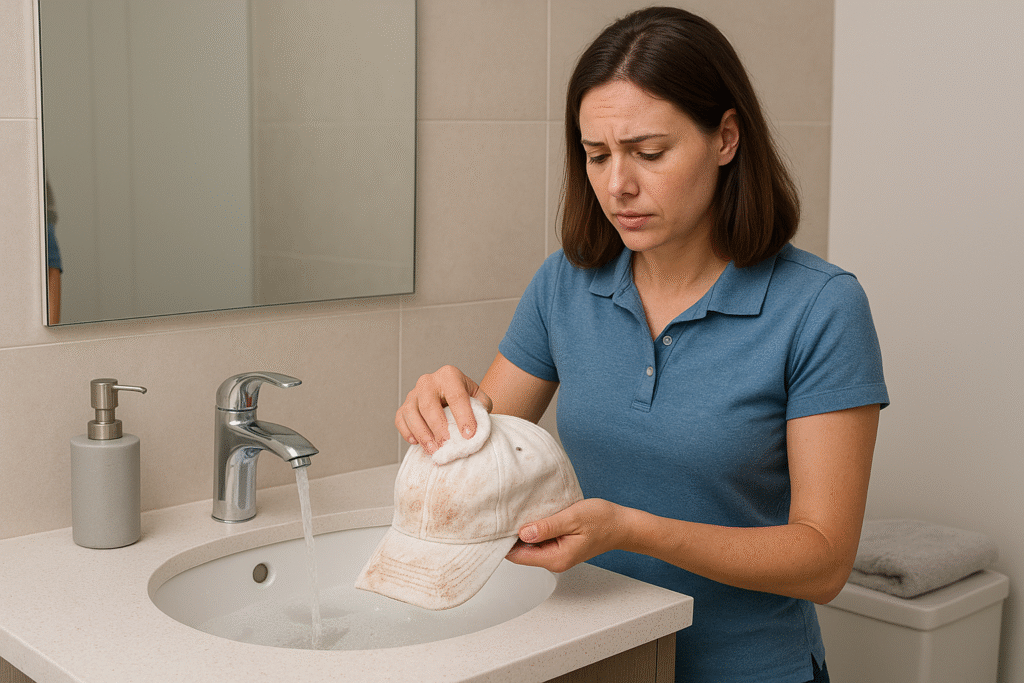
Wool Blends / Delicate & 3D-Embroidered Caps
Am besten geeignet für: lifestyle golf caps, heavy embroidery, puff/3D logos.
Why: wool is protein-based—avoid enzymes and soaking; embroidery snags easily.
Steps (spot clean only)
- Mix wool-safe detergent in cold water; dampen a cotton swab or sponge.
- Press and lift over soils; avoid rubbing.
- Blot with a clean towel; reshape and shade-dry.
Do/Don’t
- Do use a soft brush for lint; keep bristles away from raised stitches.
- Don’t use peroxide/oxygen bleach on dyed wool; don’t soak or heat.
Whitening & Sweat-Ring Removal (White Caps)
Goal: remove yellow halos without gray cast or fiber damage.
Option A: Baking soda paste (gentle, non-chlorine)
- Mix baking soda : water = 2 : 1 to a spreadable paste.
- Apply a thin layer to stains for 20 minutes → loosen with a soft brush → rinse cold.
Option B: 3% Hydrogen Peroxide (for stubborn rings)
- Dab 3% H₂O₂ on the stain with a cotton pad; spot-test first.
- Wait 5–10 minutes, then rinse. Repeat if needed.
Option C: Color-safe oxygen bleach (for colorfast whites only)
- Use per label for a short contact time; always test colorfastness.
- Avoid chlorine bleach (weakens fibers, can yellow and damage stitching).
Sunscreen / Grease Stains
Why: oils and SPF leave hydrophobic residues that regular detergent may not cut.
Schritte
- Dot the area with a small amount of mild dish soap (degreasing surfactants).
- Let sit 5–10 minutes.
- Gently work with a soft brush; rinse thoroughly in cool water.
- Follow with the appropriate fabric wash (cotton/poly/wool as above).
Tips
- Verwenden Sie cool to lukewarm water (<30 °C/86 °F) to help lift oils without setting stains.
- Avoid harsh solvents that can dissolve adhesives or damage prints.
Odor / Mildew Control
Goal: neutralize sweat acids and microbial odor without masking with perfume.
Schritte
- Acidic reset
- Mist the interior with vinegar water 1:10 (white vinegar : water).
- Wait 5 minutes, then air-dry (vinegar scent dissipates as it dries).
- Dry absorbents (after drying)
- Place activated charcoal oder baking soda sachets inside the crown overnight.
If you see mildew specks (on light cotton/poly only)
- Spot-dab with 3% hydrogen peroxide; rinse and dry fully.
- Improve storage airflow; never bag caps while damp.
Schlussfolgerung
Reinigung einer golf cap isn’t one-size-fits-all—it depends on the Gewebetyp, brim structureund specific stains you’re dealing with. Cotton, canvas, and twill require gentle hand washing; polyester and performance fabrics can handle quick soaks and, in some cases, delicate machine cycles; wool blends and embroidered caps demand spot cleaning only. White caps need specialized treatment for sweat rings, while grease and sunscreen stains respond best to mild dish soap. For odor or mildew, vinegar mist and dry absorbents like baking soda are simple, effective fixes.
Above all, remember: always identify whether the brim is plastic or paperboard—this single step decides whether soaking is safe. Stick to cold water, neutral detergents, and shade drying to preserve both shape and color. Following these guidelines answers the most common search intents—removing sweat stains, deodorizing, whitening, and keeping the brim intact—while ensuring your golf cap stays fresh round after round.
FAQ
Spot-treat sweat stains with mild detergent, hand wash in cold water, rinse well, and air-dry with a cap form or towel inside to keep the shape.
Always check the fabric and brim type first. Use cold water, gentle detergent, no soaking if the brim is paperboard, and avoid heat or dishwashers.
Yes, but carefully. Regular gentle cleaning helps remove sweat, odor, and stains without damaging the shape.
Only if the brim has a plastic core. Use a mesh laundry bag, cold water, and a delicate cycle—then reshape and air-dry immediately.
The golf cap traces its origin back to the flat cap in 19th-century Scotland and England. Golfers adopted it for sun protection, comfort, and style on the course. Over time, it evolved into modern styles like baseball-style golf caps and visors.

